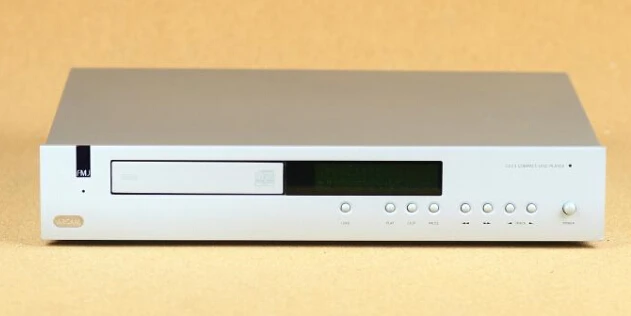Philips, which was first to market with CD players, had taken its time promoting units that can accept multidisc cartridges. The CDC875, a six-disc monster, was made available for £299.00, and touted to satisfy the needs of anyone who wants up to six hours of music on demand.
The low price does not imply that there are any operational characteristics that have been omitted. Aside from being able to load up to six discs at once and order any track on any disc, the CDC875 offers the standard fast search, track skip, pause, and repeat functions, as well as a slew of novelty settings.
When you press the Scan button, the machine will play the first 10 seconds of each track on each disc. If you get to a tune you want to hear in its entirety, simply press Scan again, and normal play mode will begin. If you don’t do this, the player will continue scanning indefinitely until you give it a new command. When you press the Shuffle button, the machine begins playing tracks from all of the discs in the cartridge in random sequence.
The typical technique for storing tracks to be played in a specific order is followed, with the inclusion of Philips’ FTS option (Favorite Track Selection). You must hit the FTS button while each track in your preset sequence is playing in order to accomplish this. This data is then saved in a separate memory, and the machine will recall your preferred track list each time the disc is loaded. The machine will play the FTS tracks of all discs in the cartridge during playback (wait for it!) A sheet of 254 numbered FTS stickers, as well as a selection of titling, coding, and category labels, are included for labelling your chosen discs.
The complete remote control handset duplicates nearly all of the function controls, and there are also volume up/down keys for use with the alternate “variable” level output connections. Headphones feature their own volume control on the front panel. The display screen is complicated, but it displays all of the working modes, disc and track numbers (not index), and either track elapsed time or time remaining.
A single phono socket provides a direct digital output, and a pair of in/out sockets allow remote operation via a matching Philips hi-fi system, in addition to the two pairs of phono connectors for fixed or variable level analogue output. The CDC875 is less complex technically and in terms of build quality than, say, the Philips CD880. It does, however, include two distinct D/A converters as well as digital filtering with four-fold oversampling.
I make no apologies for focusing on the operating aspects, as this is clearly a feature-rich machine, and much of the testing time was spent putting the changer through its paces. I’ve never been able to figure it out. Frequently, I discovered the machine’s capabilities to be far more versatile than I had anticipated.
For example, during random track shifting in shuffle mode, LEDs in the display make a shuffling motion, and there is a lot of interaction between functions— track skip during shuffling, track adding or deletion during FTS play, and so on.
Loading a single disc into one of the six trays of the cartridge (label side down) is more difficult and time consuming than loading a single disc into a standard one-disc player, and there is a tiny danger of damaging the disc surface. The degree of automation, once safely loaded, can be highly valuable. Of course, extra cartridges may be purchased to expand your collection while conserving storage space, but you’ll need to make good use of the labels to quickly identify discs and their contents.
The standard measurements and testing yielded very positive findings. Error correction was flawless, and mechanical noise was reduced to a barely audible humming. External vibration resistance was mediocre, so a stable placement is recommended, and access time from start-up was invariably slow: Roughly six seconds to start playing Track 1 on the selected disc or nine seconds for Track 15.
Track skip access on the same disc, on the other hand, was lightning fast, as was cueing from Pause mode. From 20Hz to 20kHz, the frequency response was within the specified 0.1dB, and dynamic linearity was excellent, with dynamic linearity within 0.5dB at — 70dB and — 80dB, and just around 2dB adrift at — 90dB. Right on left channel separation was 93dB, while left on right channel separation was nearly 10dB better. The signal-to-noise ratio was considerably above the claimed 96dB, and distortion was minimal.
The crucial listening tests confirmed that this new Philips player is significantly smoother and musically true than the earliest Philips budget models. The degree of forward presence was neither stressed nor hesitant, and the frequency coverage was broad but not attention-getting. This design approach, which prioritizes musical authenticity above sensationalism, is perfectly suited to classical music, and I found my favorite CDs to be more than sufficiently reproduced. This CD autochanger was an exceptional bargain at its low price.








